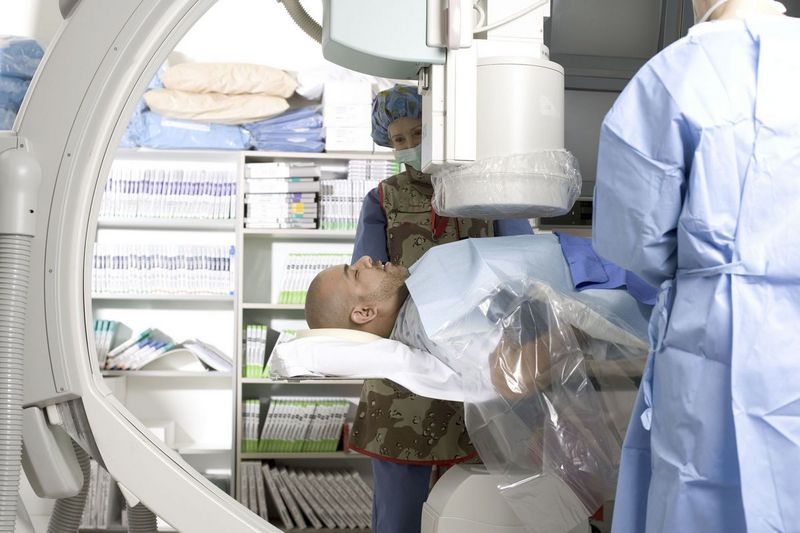
FRIDAY, Oct. 14 (HealthDay News) — Treatment for breast cancer has advanced in recent years by becoming more and more personalized.
Not personalized to the patient, mind you, but to the particular tumors and cancer cells inside that patient.
New tests are allowing doctors to figure out what genetic or biological factors are driving each individual woman’s type of cancer, and new therapies are being targeted to directly attack those specific factors.
“When it comes to treating breast cancer, we used to throw the book at everyone,” said Dr. Christy A. Russell, a board member of the American Cancer Society’s California division and an associate professor at the University of Southern California Keck School of Medicine. “Now it’s much more targeted.”
That’s a message worth sharing during October, Breast Cancer Awareness Month.
The same five treatment options are still available to women with breast cancer: surgery, chemotherapy, radiation therapy, hormone therapy and targeted therapy. But researchers are honing and improving each option, either to better target the cancer cells or to provide women with a wider range of treatment choices.
“Within each of those types of treatment modalities, we are refining how the treatment is delivered or how we choose which treatment is appropriate for each patient,” said Susan Brown, a registered nurse and director of health education for Susan G. Komen for the Cure, a nonprofit group focused on fighting breast cancer.
For example, there have been few advances in creating new chemotherapy drugs to battle breast cancer, Russell said. “What has changed is trying to figure out who will benefit from chemotherapy,” she said. “We are taking the cancers and having them evaluated genetically, to give us some genetic signatures to tell us if those cancers would shrink if they got chemotherapy.”
This “genomic profiling” of a woman’s specific cancer has “reduced the number of women with early breast cancer who are having to be treated with chemotherapy,” Russell said.
One new test in particular, Oncotype DX, is being used to help women who would most likely benefit from hormone therapy because their cancer is spurred by estrogen or other female hormones.
Oncotype DX analyzes the genetic makeup of breast cancer cells to determine the likelihood that a woman’s particular cancer will recur after hormone therapy treatment. If the likelihood is high, doctors will recommend that the woman undergo both hormone therapy and chemotherapy, Brown said.
“This information can help doctors decide whether to add chemotherapy to a treatment regimen that already includes hormone therapy,” she said.
Doctors also have learned to analyze cancers for specific factors that, if blocked, can make chemotherapy more effective in killing the cancer cells.
About one-fourth of all breast cancer patients have cancer cells containing mutated forms of HER2neu, a gene that promotes the creation of a growth factor protein.
“In some breast cancers, instead of the cancer cells having two copies of the gene, the cells have 10 or 20 or more copies of the gene,” Russell said. “The gene is producing a protein that causes the cell to grow much more rapidly and uncontrollably.”
Treatment with a drug called trastuzumab (Herceptin) can block the growth signals transmitted by the gene, slowing the progress of the cancer and making it more susceptible to chemotherapy, Russell said.
“Most of the research going on now is trying to figure out how to combine these new targeted agents with chemotherapy so we can focus in on the specific gene abnormalities that are going on in the cells,” she said.
This type of research also is combating the ability of cancer to grow resistant to chemotherapy and hormone therapy.
Researchers have learned that a growth factor protein known as mTOR promotes the spread of cancer cells and can bolster their resistance to hormone therapy, Russell said.
“Medications that act as mTOR inhibitors appear to be able to make some cancer cells that have become resistant to hormone therapy become sensitive to the therapy again,” Russell said. “There are many pathways we are aware of that cancer cells are able [to use] to overcome their ability to be killed by chemotherapy. All of these different gene pathways are becoming known, and, as they are becoming known, they are developing drugs that are targeting those pathways. That’s where the majority of the clinical trials are occurring.”
Which means it is essential for women with breast cancer to participate in clinical trials, Brown said.
“Currently, fewer than 5 percent of patients enroll in clinical trials,” she said. “The only way we’re going to know more is if we are able to translate what we think we’ve learned in a lab into a clinical situation,” Brown explained.
“Everything we know about breast cancer now is because of the very courageous women who came before us and enrolled in clinical trials,” Brown added.
More information
The American Cancer Society has a detailed guide to breast cancer.
A companion article describes one woman’s account of how breast cancer changed her life.

